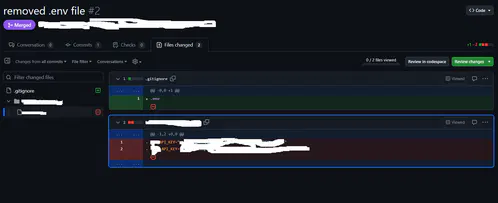Background: 15 years of experience in software and apparently spoiled because it was already set up correctly.
Been practicing doing my own servers, published a test site and 24 hours later, root was compromised.
Rolled back to the backup before I made it public and now I have a security checklist.
As a linux n00b who just recently took the plunge and set up a public site (tho really just for my own / selfhosting),
Can anyone recommend a good guide or starting place for how to harden the setup? Im running mint on my former gaming rig, site is set up LAMP
The other poster gave you a lot. If that’s too much at once, the really low hanging fruit you want to start with is:
-
Choose an active, secure distro. There’s a lot of flavors of Linux out there and they can be fun to try but if you’re putting something up publicly it should be running on one that’s well maintained and known for security. CentOS and Debian are excellent easy choices for example.
-
Similarly, pick well maintained software with a track record. Nginx and Apache have been around forever and have excellent track records, for example, both for being secure and fixing flaws quickly.
-
If you use Docker, once again keep an eye out for things that are actively maintained. If you decide to use Nginx, there will be five million containers to choose from. DockerHub gives you the tools to make this determination: Download number is a decent proxy for “how many people are using this” and the list of updates tells you how often and how recently it’s being updated.
-
Finally, definitely do look at the other poster’s notes about SSH. 5 seconds after you put up an SSH server, you’ll be getting hit with rogue login attempts.
-
Definitely get a password manager, and it’s not just one password per server but one password per service. Your login password to the computer is different from your login to any other things your server is running.
The rest requires research, but these steps will protect you from the most common threats pretty effectively. The world is full of bots poking at every service they can find, so keeping them out is crucial. You won’t be protected from a dedicated, knowledgeable attacker until you do the rest of what the other poster said, and then some, so try not to make too many enemies.
The TLDR is here : https://www.digitalocean.com/community/tutorials/recommended-security-measures-to-protect-your-servers
You won’t be protected from a dedicated, knowledgeable attacker until you do the rest of what the other poster said, and then some,
You’re right I didn’t even get to ACME and PKI or TOTP
https://letsencrypt.org/getting-started/
https://openbao.org/docs/secrets/pki/
https://openbao.org/docs/secrets/totp/
And for bonus points build your own certificate authority to sign it all.
https://smallstep.com/blog/build-a-tiny-ca-with-raspberry-pi-yubikey/
Thank you for this! I’ve got some homework to do!
-
Lol you can actually demo a github compromise in real time to an audience.
Make a repo with an API key, publish it, and literally just watch as it takes only a few minutes before a script logs in.
I search commits for “removed env file” to hopefully catch people who don’t know how git works.
–verbose please?
edit: never mind, found it. So there’s dumbasses storing sensitive data (keys!) inside their git folder and unable to configure .gitignore…
 yeah, I just tried it there, people actually did it.
yeah, I just tried it there, people actually did it.I always start with .gitignore and adding the .env then making it.
Anywho, there’s git filter-repo which is quite nice and retconned some of my repos for some minor things out of existence :P
I searched for “added gitignore” and I found an etherum wallet with 25 cent.
At least you had a backup
One time, I didn’t realize I had allowed all users to log in via ssh, and I had a user “steam” whose password was just “steam”.
“Hey, why is this Valheim server running like shit?”
“Wtf is
xrx?”“Oh, it looks like it’s mining crypto. Cool. Welp, gotta nuke this whole box now.”
So anyway, now I use NixOS.
Do not allow username/password login for ssh. Force certificate authentication only!
If it’s public facing, how about dont turn on ssh to the public, open it to select ips or ranges. Use a non standard port, use a cert or even a radius with TOTP like privacyIdea. How about a port knocker to open the non standard port as well. Autoban to lock out source ips.
That’s just off the top of my head.
There’s a lot you can do to harden a host.
I’ve gotta say this post made me appreciate switching to lemmy. This post is actually helpful for the poor sap that didn’t know better, instead of pure salt like another site I won’t mention.
I shared it because, out there, there is a junior engineer experiencing severe imposter syndrome. And here I am, someone who has successfully delivered applications with millions of users and advanced to leadership roles within the tech industry, who overlook basic security principles.
We all make mistakes!
Basic setup for me is scripted on a new system. In regards to ssh, I make sure:
- Root account is disabled, sudo only
- ssh only by keys
- sshd blocks all users but a few, via AllowUsers
- All ‘default usernames’ are removed, like ec2-user or ubuntu for AWS ec2 systems
- The default ssh port moved if ssh has to be exposed to the Internet. No, this doesn’t make it “more secure” but damn, it reduces the script denials in my system logs, fight me.
- Services are only allowed connections by an allow list of IPs or subnets. Internal, when possible.
My systems are not “unhackable” but not low-hanging fruit, either. I assume everything I have out there can be hacked by someone SUPER determined, and have a vector of protection to mitigate backwash in case they gain full access.
- The default ssh port moved if ssh has to be exposed to the Internet. No, this doesn’t make it “more secure” but damn, it reduces the script denials in my system logs, fight me.
Gosh I get unreasonably frustrated when someone says yeah but that’s just security through obscurity. Like yeah, we all know what nmap is, a persistent threat will just look at all 65535 and figure out where ssh is listening… But if you change your threat model and talk about bots? Logs are much cleaner and moving ports gets rid of a lot of traffic. Obviously so does enabling keys only.
Also does anyone still port knock these days?
I’m confused. I never disable root user and never got hacked.
Is the issue that the app is coded in a shitty way maybe ?
You can’t really disable it anyway.
Hardening is mostly prevent root login from outside in case every other layer of authentication and access control broke, do not allow regular user to su/sudo into it for free, and have a tight grip on anything that’s executable and have a setuid bit set. I did not install a system from scratch in a long time but I believe this would be the default on most things that are not geared toward end-user devices, too.
You can’t really disable the root user. You can make it so they can’t login remotely, which is highly suggested.
sudo passwd -l rootThis disables the root user
There’s no real advantage to disable the root user, and I really don’t recommend it. You can disable SSH root login, and as long as you ensure root has a secure password that’s different than your own account your system is just as safe with the added advantage of having the root account incase something happens.







